Building an Evergreen Content Strategy to Boost Your SEO
Want content with steady, long-term traffic flow? Then it (and the strategy behind it) must evolve over time. Revisit old blog posts and update them for timeliness and relevance. Another method is creating content that doesn’t go stale, also known as evergreen content, which saves you time and results in a nice SEO boost from Google.
Evergreen content stays relevant and valuable to readers over time, unlike time-sensitive content, which has a short lifespan.
Content is considered evergreen if it answers timeless questions, needs minimal updates, covers fundamental concepts, and consistently matches what people search for.
Types of evergreen content include how-to guides, tutorials, comprehensive guides, listicles, glossaries, case studies, and videos; all focus on topics that stay useful over time.
Evergreen content delivers high ROI with minimal maintenance, provides steady traffic flow, offers multiple marketing opportunities, and naturally attracts backlinks over time.
To find evergreen topics, understand your niche. Use keyword research tools like SE Ranking to identify popular search terms with stable search volume.
Create effective evergreen content by using long-term language, choosing specific topics with proven search demand, combining related subtopics into comprehensive guides, repurposing content across different formats, and using SE Ranking’s content analysis tools to optimize for search engines.
Keep your evergreen content’s performance high with regular promotion, backlink building, rank tracking, and content updating.
What is evergreen content?
Evergreen content is content that remains useful and relevant no matter when people read it. Such content search traffic stays high for months or years because its topics, questions, and issues remain relevant and interesting to readers.
The name comes from evergreen trees, which hang onto their leaves during all four seasons, unlike other tree types that shed them. Just as evergreen trees stand the test of time, so does evergreen content.
Evergreen vs time-sensitive content
Time-sensitive content is exactly as it sounds; it’s only relevant for a limited time. Think of seasonal or holiday-specific content. For example, a blog post about the best seasonal holiday drinks at Starbucks is time-sensitive because Starbucks will eventually take its holiday drinks off the menu. After the holidays, users will have no incentive to read that content.
Evergreen content stays relevant and valuable for much longer. It’s sustainable and doesn’t go “out of style,” so to speak. As opposed to a piece of content on holiday drinks at Starbucks, a blog post about the best Starbucks drinks for people who have a sweet tooth is evergreen.
What makes content evergreen?
Not all content is meant to be evergreen. Here’s a simple checklist to help you discern what content is evergreen and what isn’t:
- Answers timeless questions and problems that don’t change from year to year
- Remains accurate and relevant (or requires minimal updates from your side)
- Covers fundamental concepts and skills
- Matches what people frequently search for and the information it covers is useful regardless of the time
Content that is not evergreen
- News articles and current events
- Trending topics and fads
- Statistics or research that will eventually become obsolete
- Seasonal content (holiday-specific), and event-related material
- Annual roundups or “best of” lists
- Time-sensitive announcements
- Product reviews
- News stories
Evergreen content examples
Evergreen content comes in many shapes and sizes. Here are some evergreen websites, topics, and formats to consider.
Evergreen websites
Here are a few examples of evergreen websites. You may have already encountered them through your queries:
- Wikipedia. While quality control isn’t necessarily the platform’s biggest strength, it’s still a one-stop hub for evergreen content. You can look up well-known figures, events, and objects and get a detailed description. For example, Oprah Winfrey’s Wiki page includes everything from her early life and television career to the awards she’s won.
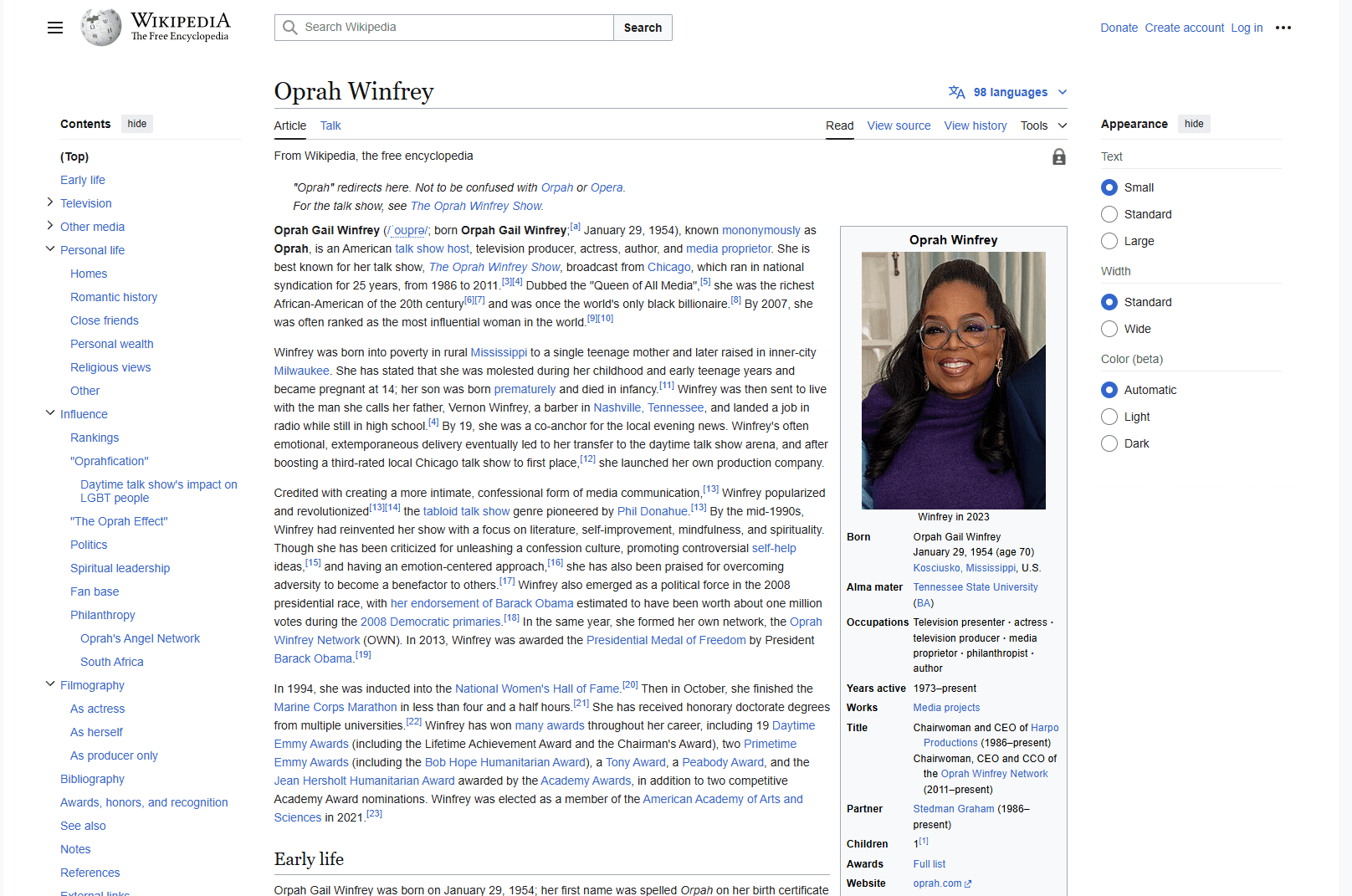
- wikiHow is a similar story, except it will teach you how to do almost anything. Search “how to tie a tie,” and you’ll get more tutorials than you could ever ask for.

- Answers.com is another great resource for evergreen content. Input your question to get detailed responses.
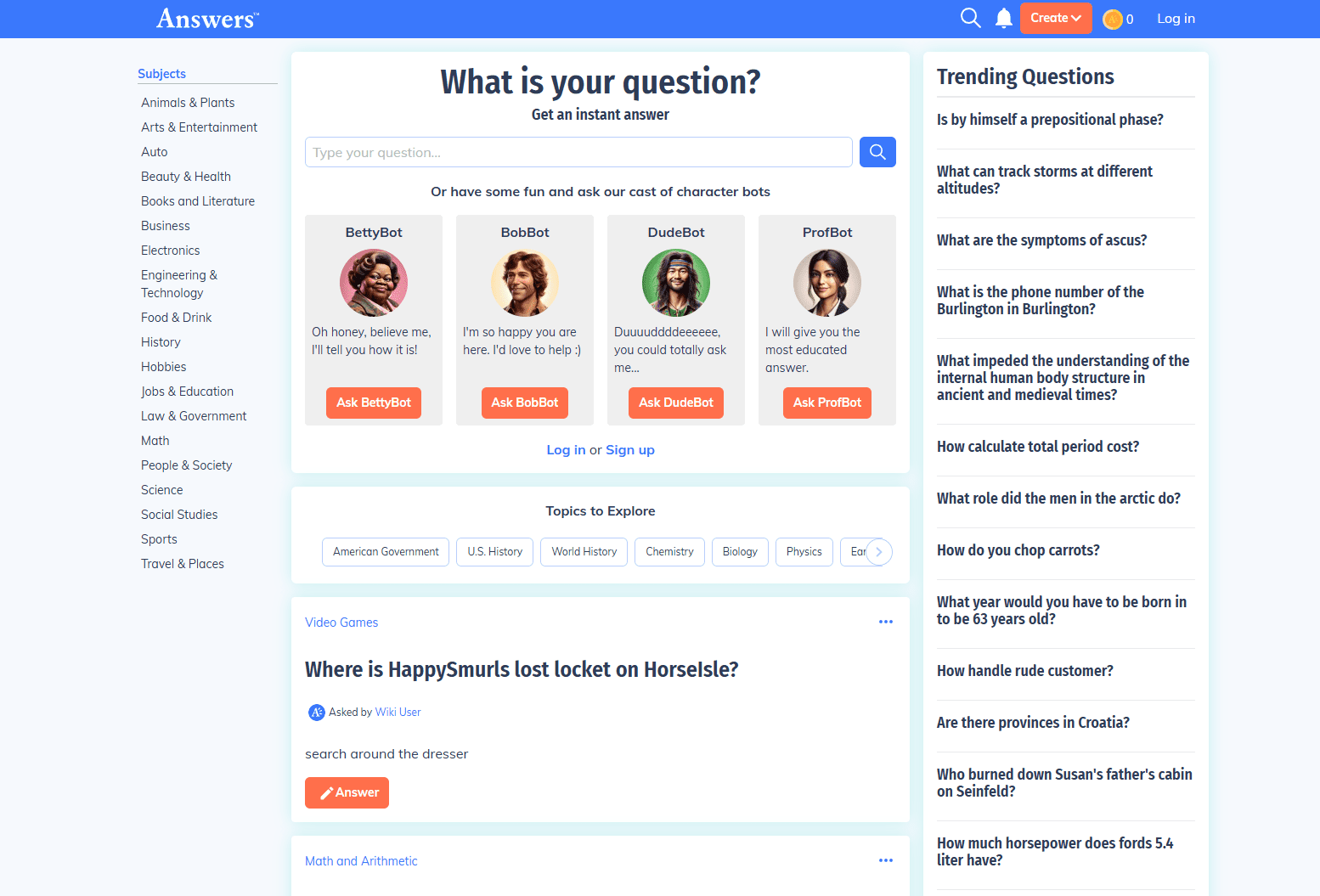
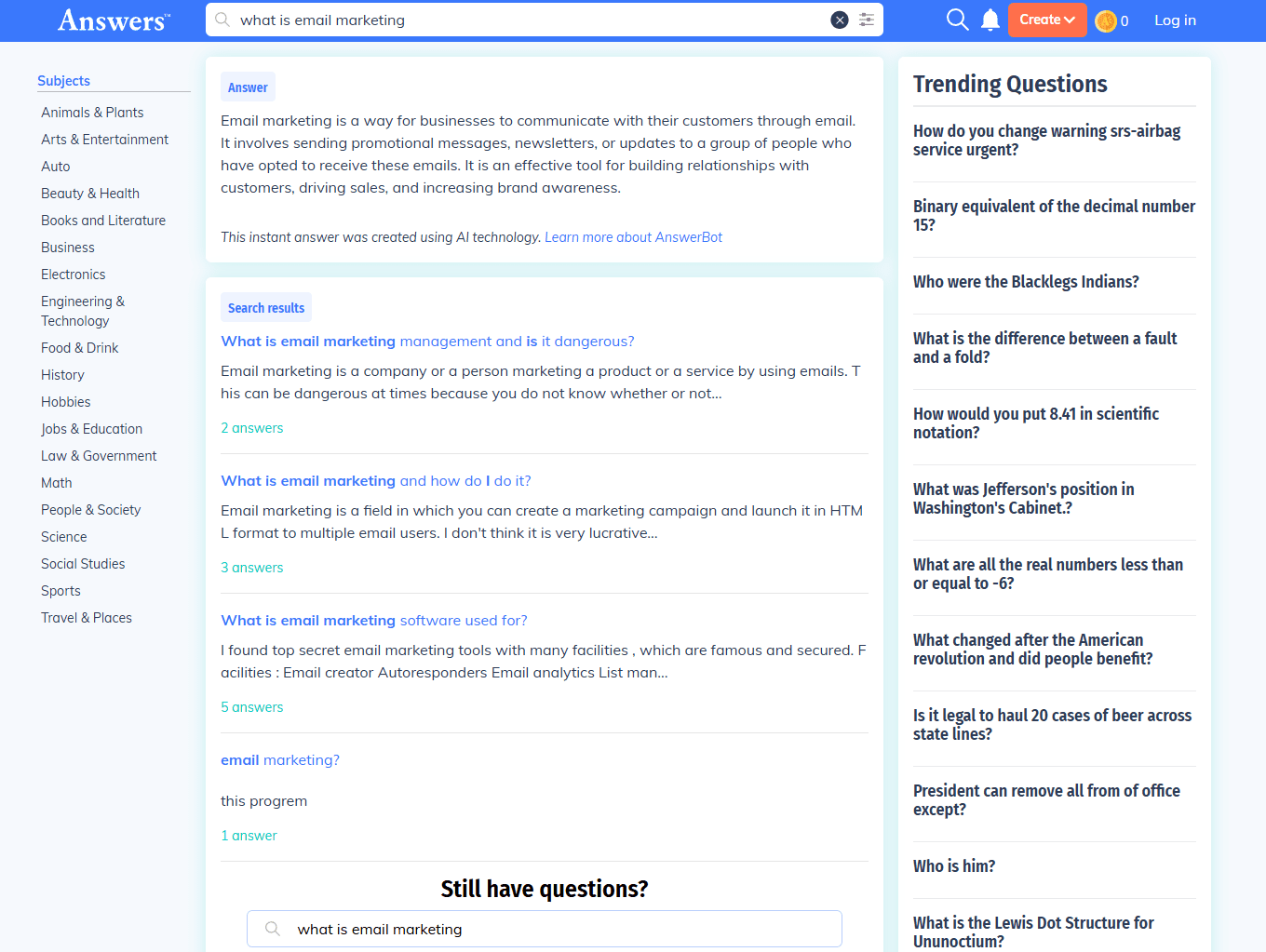
Evergreen content topics & formats
Let’s explore the most effective formats for evergreen content. To help you with your evergreen content SEO strategy, we’ll share general examples and present examples from our blog.
- How-tos and tutorials: Step-by-step instructions for learning specific skills or solving problems.
- How to create a monthly budget
- How to write a resume
- How to do a website audit (always relevant content that requires only minor tweaks)
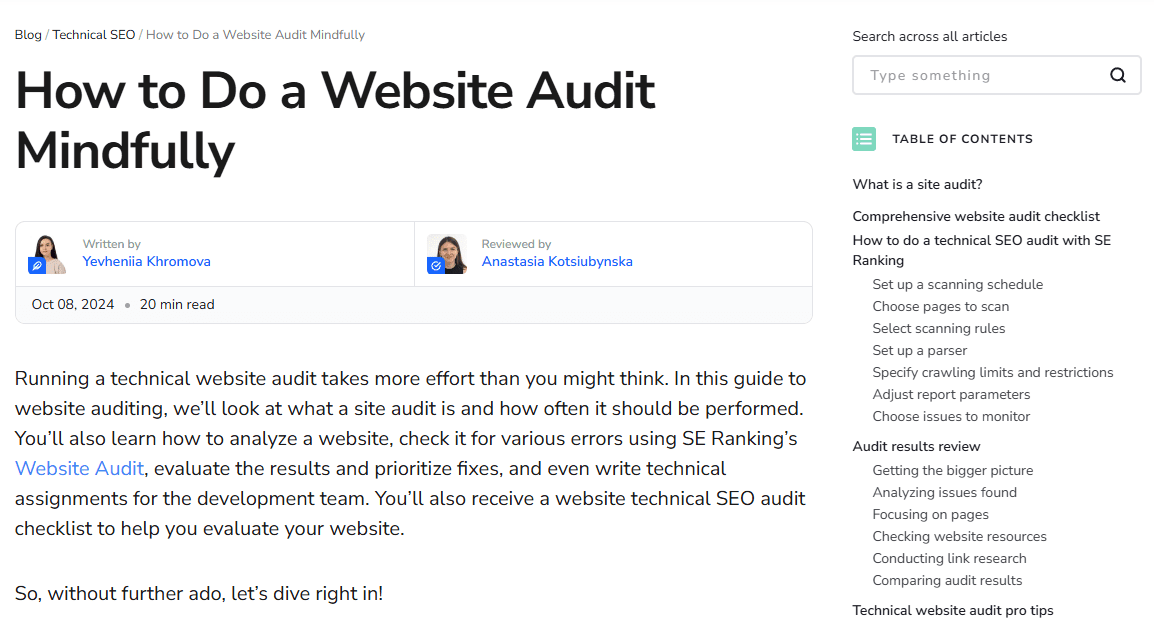
- Guides: Complete guides with comprehensive information about core topics.
- Beginner’s guide to digital photography
- Essential guide to personal finance
- The complete guide to SEO search intent
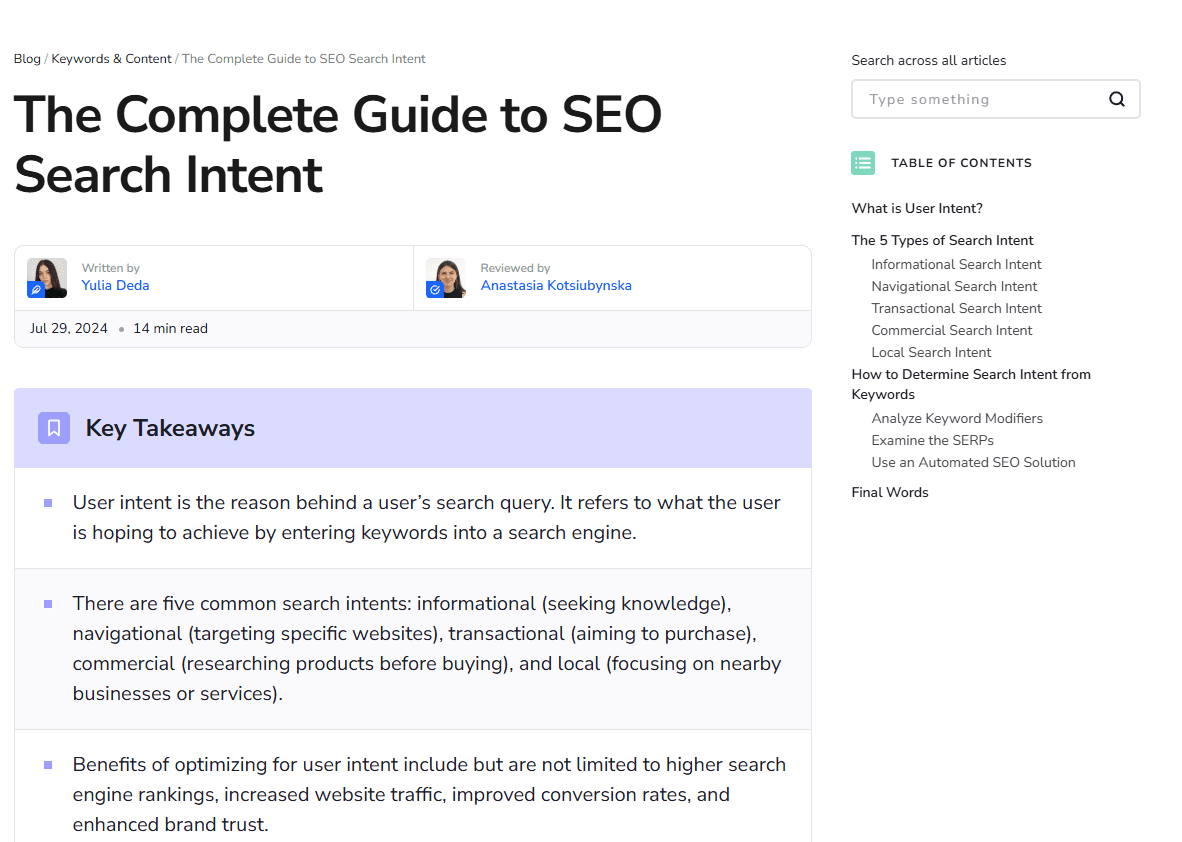
- Listicles: Curated collections of timeless tips, best practices, and resources.
- 15 ways to save money
- 30 tips to help your startup business succeed
- Best SEO practices for writing title and meta description tags (covering a fundamental aspect of SEO that remains stable)
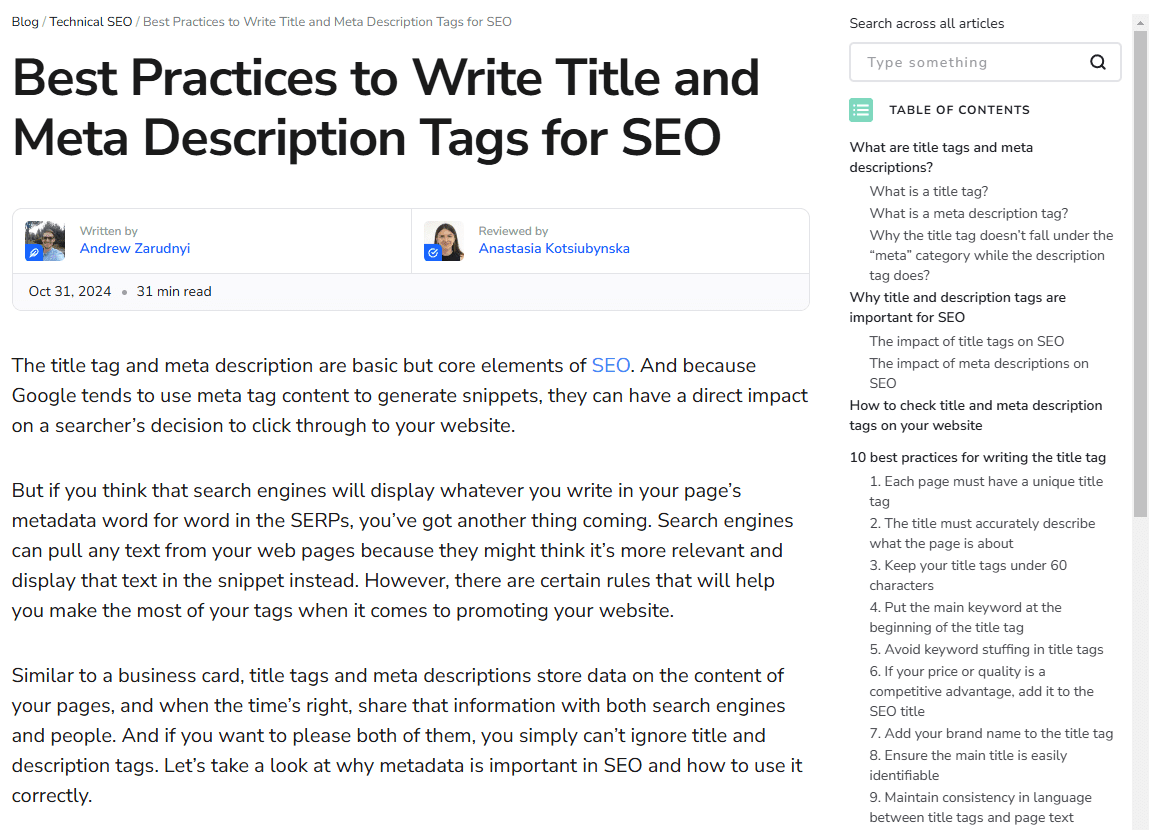
- Encyclopedia-style entries containing general information: In-depth explanations of broad concepts.
- Understanding climate change
- How does insurance work?
- Fundamentals of Quantum Mechanics
- Glossaries/explanations of terms: Clear explanations of common terminology.
- Marketing terms explained
- Common legal terminology
- Financial terms for beginners
- Case studies: Firsthand examples of how your customer used your product or service to solve a problem. The topic, however, should be interesting to people.
- How a bakery used Facebook ads to boost holiday sales by 50%
- Boutique sales surge after influencer partnerships
- How SE Ranking helped Japan Ski Experience boost search traffic by 6x and top 5 keyword rankings by 20x
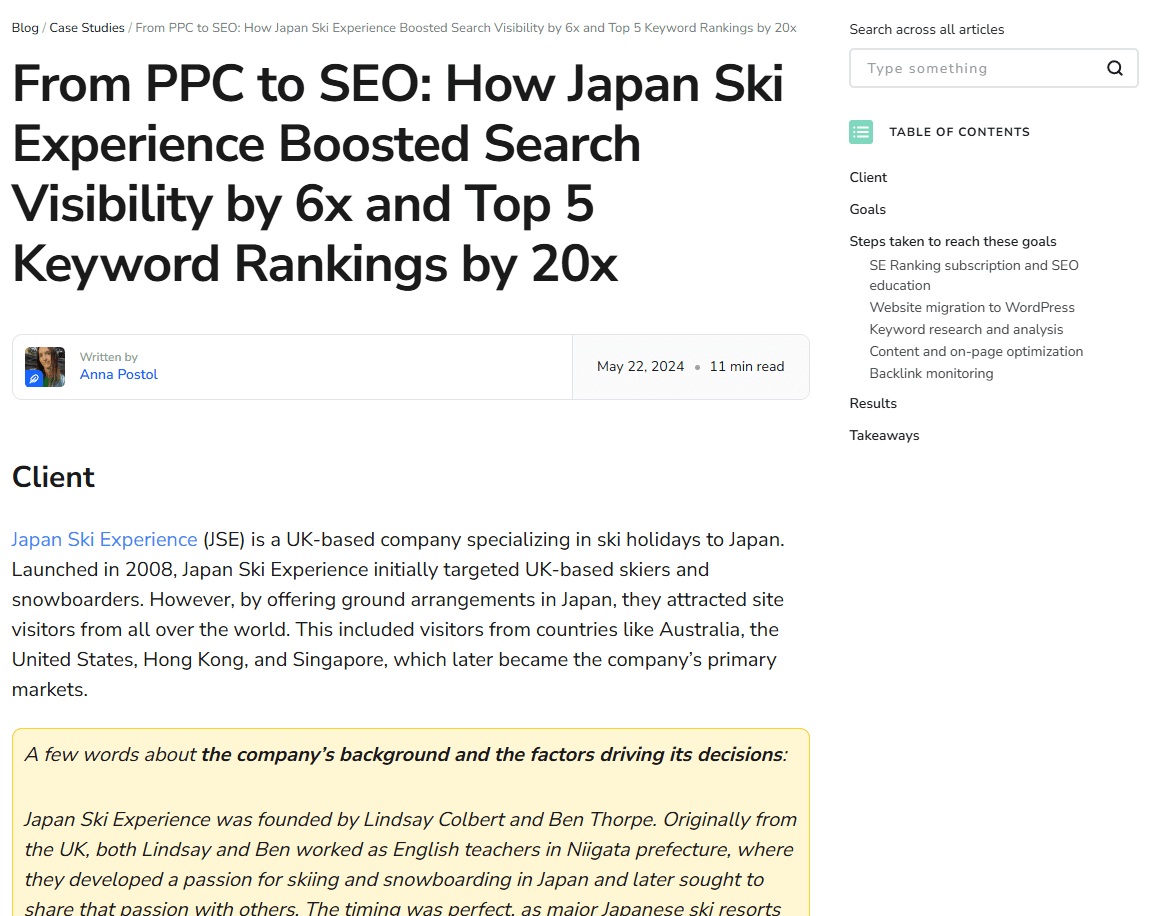
- FAQs: Common questions with detailed answers.
- Home buying FAQ
- Pet care FAQ
- Checklists: Easy-to-follow lists of items or tasks to complete.
- Wedding planning checklist
- SEO fundamentals checklist
- SEO checklist for new and existing websites
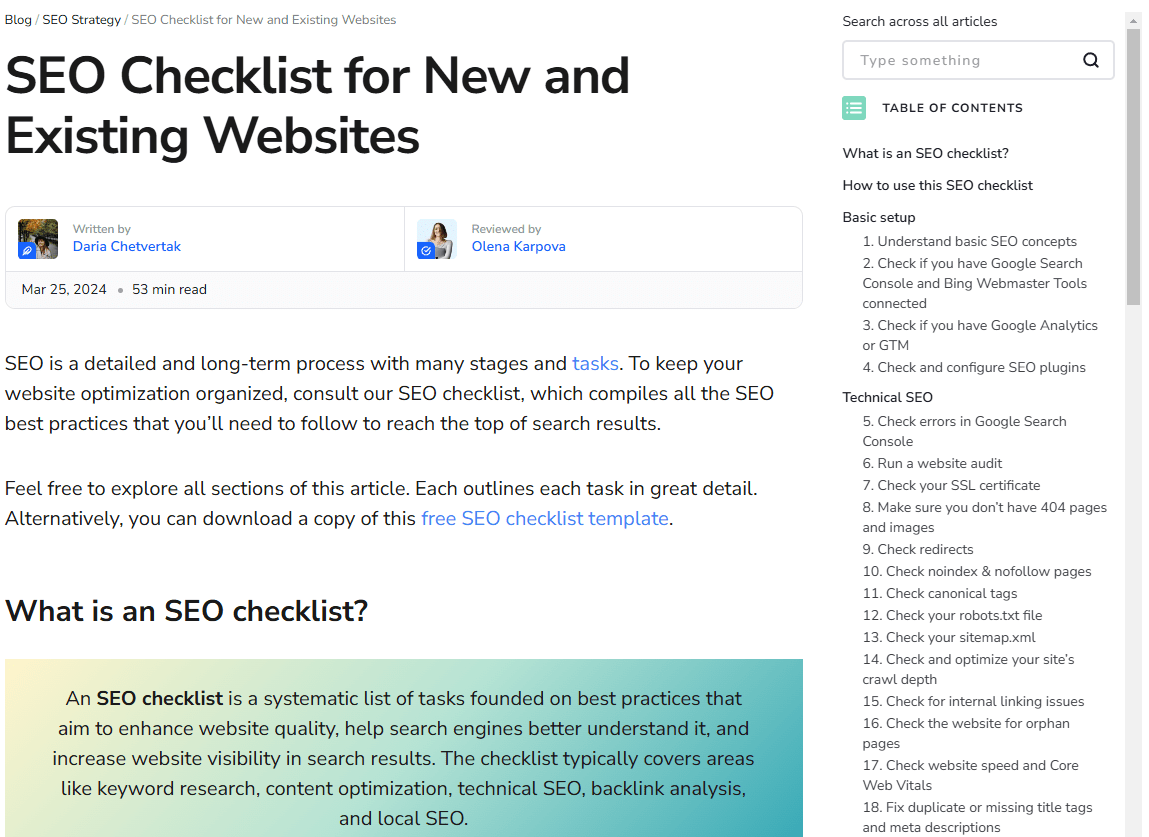
- Videos: Visual illustrations of timeless topics with enduring tips and tricks. For example,
- How to make the perfect cheesecake
- Tips for home appliance repair
- How to do keyword research with SE Ranking
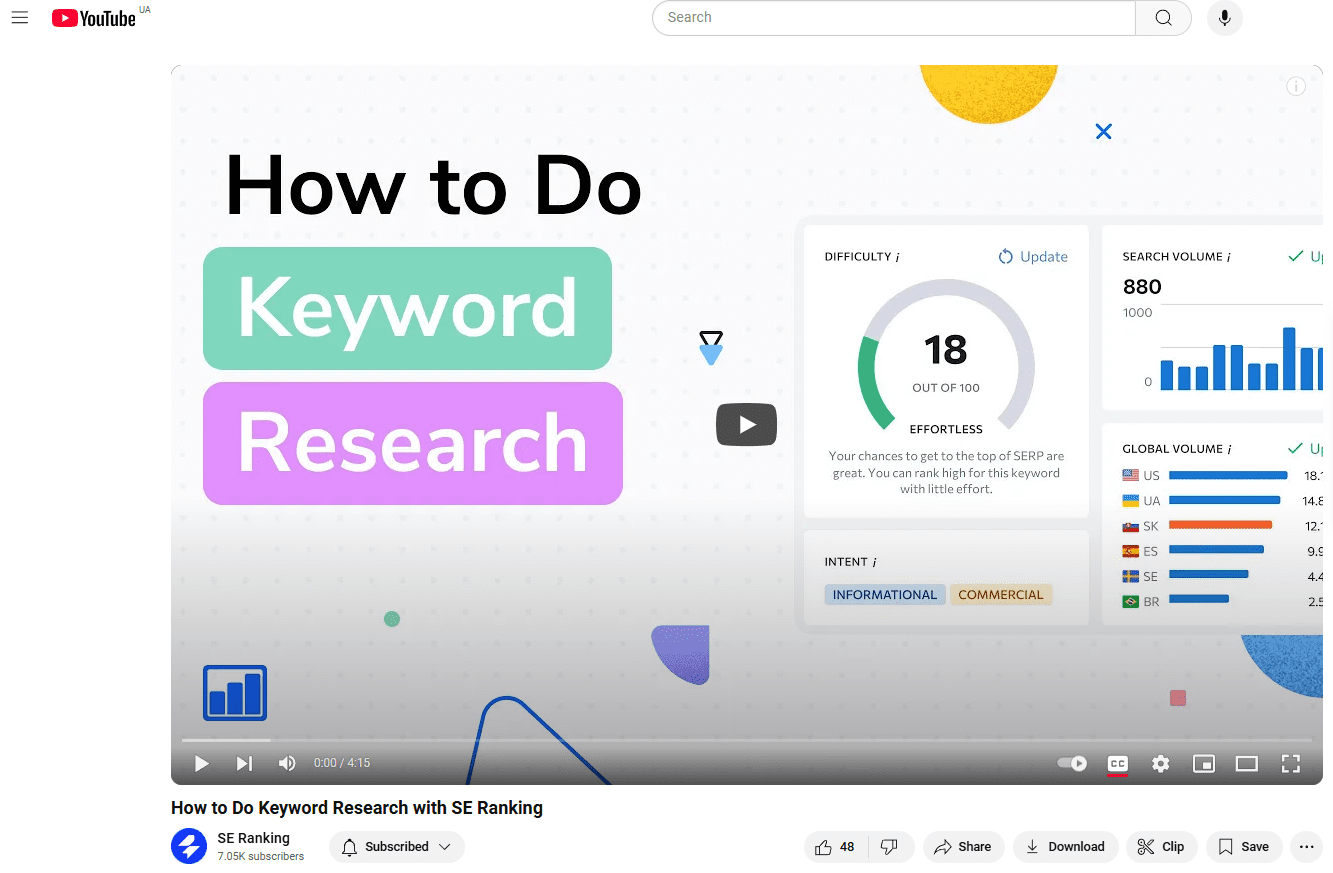
- Infographics: Visual explanations of information, in the form of a graphic.
- Basic first aid tips
- Yoga poses for beginners
Why evergreen content works
Here are the key benefits of evergreen content and why it’s worth adding to your content marketing strategy:
- Less investments, more results. Unlike news or trending pieces that quickly go stale, evergreen content needs minimal updates to stay fresh. You don’t have to update it as often. Its statistics or examples just need a few tweaks over the months and years, making it low-maintenance and high-yield. Unlike viral content, evergreen content doesn’t need constant updates, and traffic declines are much less common.
Tip: Combining evergreen articles and trending content is a sound content strategy. It pulls in a steady flow of long-term traffic while keeping readers updated on industry trends and answering time-sensitive questions. Even if a trending topic brings you an immediate surge in traffic, it won’t last. Mixing both gives you lasting value and timely relevance.
- Steady traffic flow. Search engines keep displaying evergreen content because people always search for these topics. New readers will discover your content daily to get answers to their queries. Since evergreen content retains its value from year to year, it will steadily gain backlinks and authority, leading to traffic that scales with time.
- Multiple marketing opportunities. High-quality evergreen content works across multiple channels, including social media, email marketing, and paid ads. You can also link it to newer articles, use it as core website content, and repurpose it for training materials. Diversifying your evergreen pieces across all your marketing efforts gives you more returns on a single piece of content.
- More backlinks. Good websites link to comprehensive, reliable resources. Evergreen content is great for SEO because it attracts backlinks for years. As more sites with high quality link to your content, your website’s authority grows. This improves your search rankings and brings in more visitors.
Our academy covers all content beyond evergreen in the Content SEO course. Check it out now to improve your content writing techniques!
How to find and research evergreen content topics
Now that you’re familiar with evergreen content, how it differs from time-sensitive content, and why creating it is important, let’s explore some ways to devise evergreen topics.
Look for evergreen topics and formats that fit your niche
Avoid things like:
- News stories
- Seasonal, holiday, and event-related material
- Statistics
- Current trends
Instead, focus on:
- How-tos and tutorials
- Guides
- Reviews
- Listicles
- Encyclopedia-style entries with basic information
- Glossaries/term explanations
Think of how these formats relate to your niche to get countless evergreen topics. For example, if your niche is maternity fashion, some evergreen article ideas might be:
- How to Style Maternity Overalls
- The Most Versatile Clothes for Pregnant Women
- 5 Post-Partum Staples You Need in Your Wardrobe
Do keyword research
One sure-fire way to find endless evergreen content ideas is to do keyword research. Dedicated tools like SE Ranking’s Keyword Research tool know exactly which topics your target audience is fond of, and will provide you with plenty of keyword ideas. This is because more people google these popular topics more often than others, which is reflected in the search volume metric.
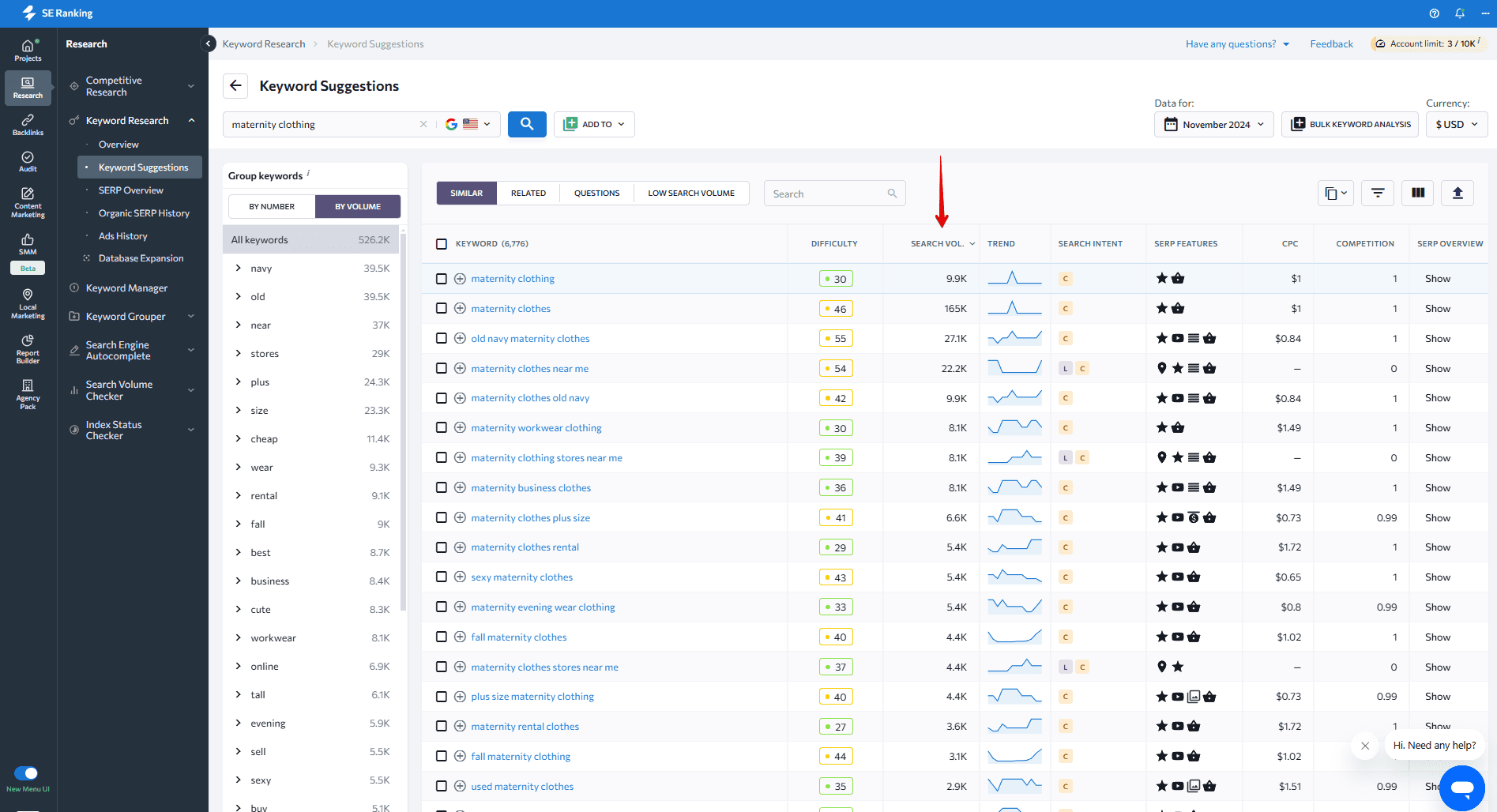
Keyword Research also analyzes seasonality trends. You can see at a glance if a keyword enjoys stable public interest throughout the year or if its search volume goes up and down.
Click the arrow next to the keyword to see a detailed graph.
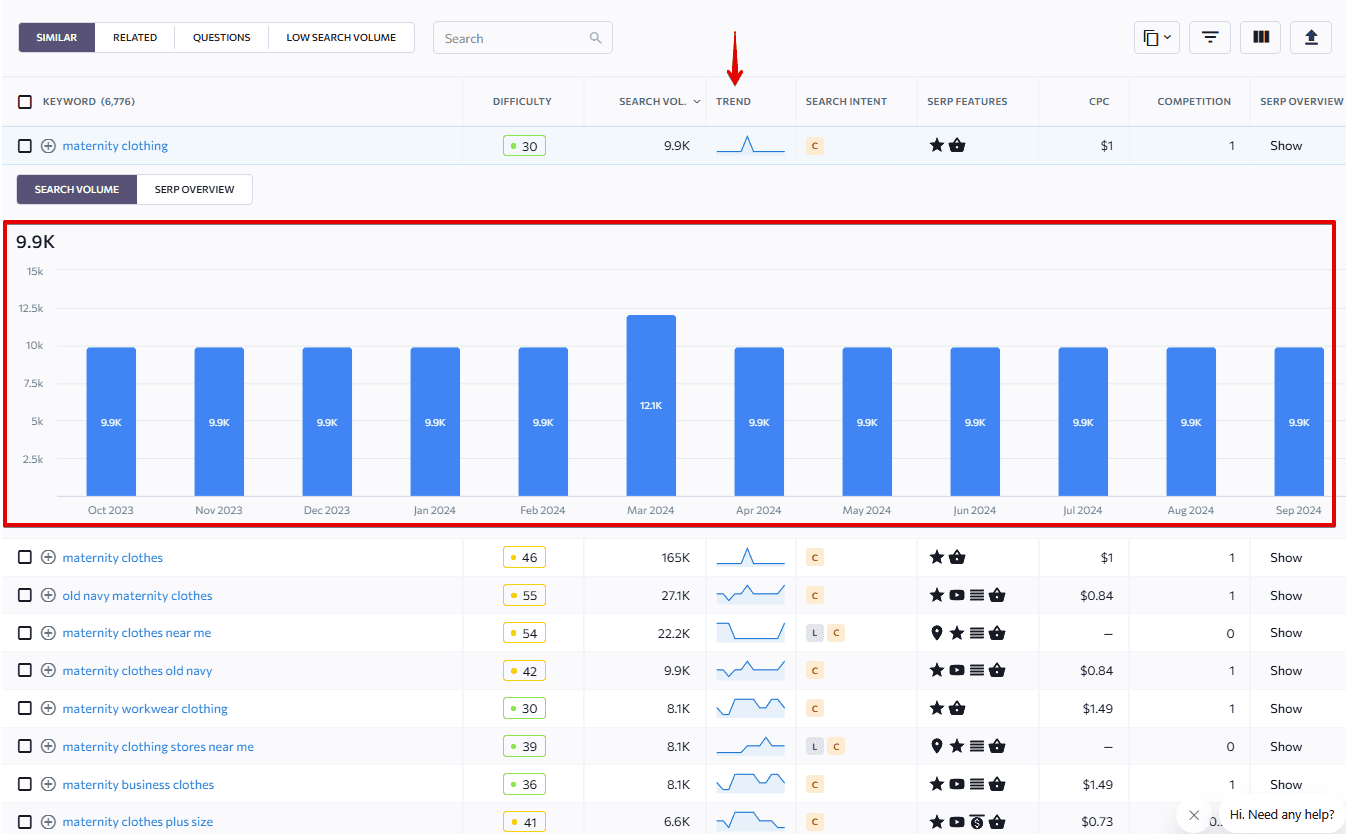
Unlike brainstorming, you don’t have to second-guess with keyword research. It’s a reliable way to tell if the topic you choose resonates with your target audience. An even greater benefit is that once Google spots your article and finds it useful, your content piece will generate a steady flow of targeted traffic to your website.
If you switch to the SERP Overview tab, you’ll see the titles of top-ranking pages. These titles inform you on what to cover in your next article.
It even contains links to content. Follow them to read top-ranking articles and get inspired.
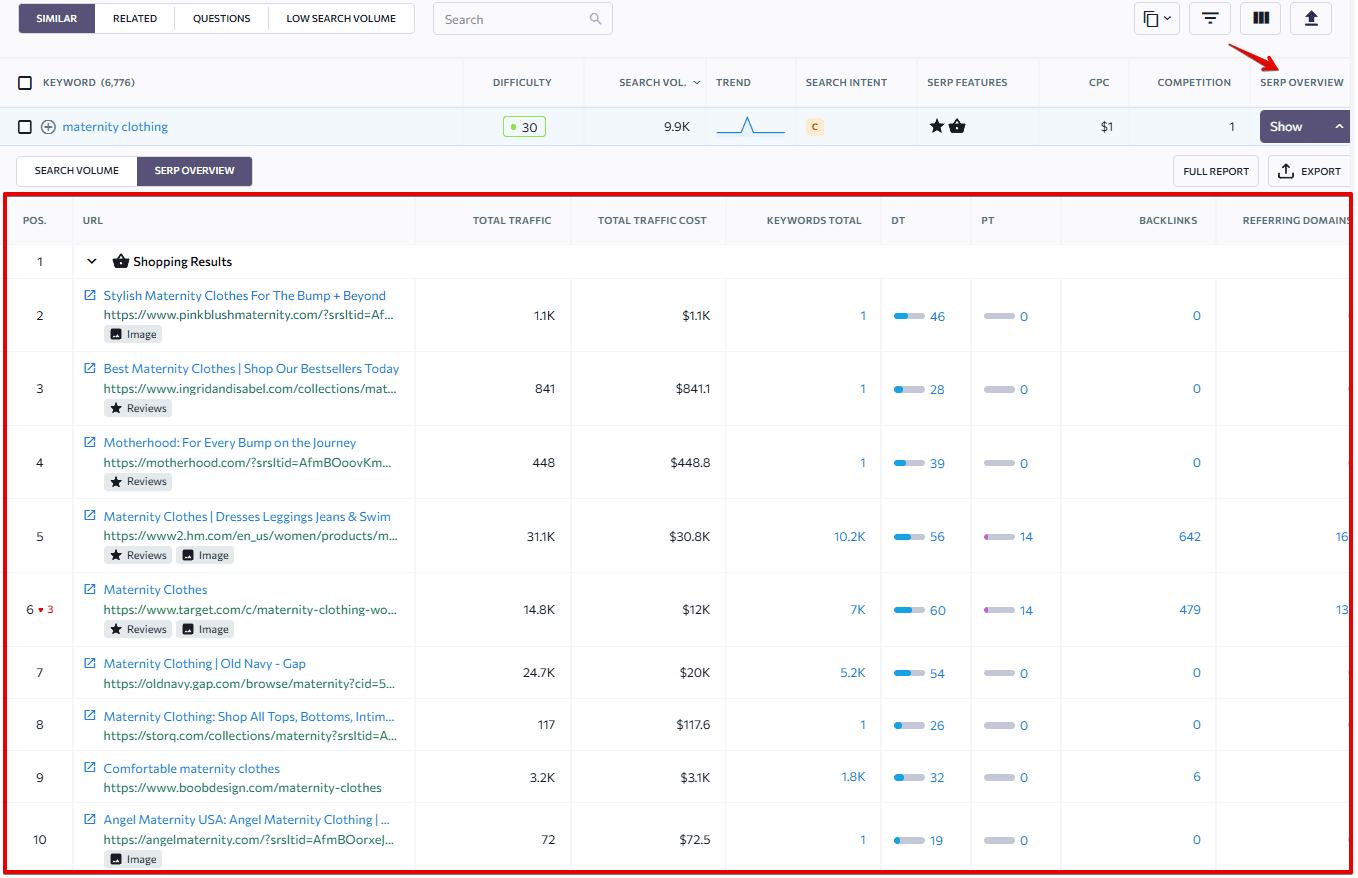
Perhaps you’re eager to start doing keyword research on your own. Here’s a simple three-step guide for you to follow:
- Start with a seed keyword, which is a general phrase describing the industry you’re in. The tool will offer hundreds of suggestions, similar to the ones in the screenshots above.
- Pick the best seed keywords for evergreen content.
- Select keywords with decent search volume and a viable keyword difficulty score (a metric that shows how tough the competition is). If the keyword is lucrative, many websites (including well-established ones) will target it, making it harder to rank on Google’s first page.
Make your evergreen content stand out
As you’re considering different topics, you might have a startling realization: “Everything’s been written about already!”
These days, it’s hard to think of ideas that are 100% new.
Thankfully, your content does not need to be 100% new. Topics that aren’t covered generally aren’t of interest to people. To find a topic with potential, pick a popular topic as suggested by your keyword research, and then create content around it that stands out. Here are some suggestions:
- Make it unique by adding your thoughts, opinions, and viewpoints.
- Check the comments on existing articles to see if readers have constructive feedback. Use these comments as source material to write about.
- Use Google’s Question Hub to unearth unanswered questions. This makes adding unique value to your content easier.
- Make it a series. If you write a blog on how to style maternity overalls, could you do future pieces on how to style maternity leggings and biker shorts? Similarly, take a series and turn it into an all-purpose guide. (More on that soon.)
Tips for building an effective evergreen content strategy
Evergreen content gives you endless opportunities to be unique, but here are some basic guidelines to get the most out of it.
- Don’t use short-term language. This includes words like “recently,” “this year,” and “in the next season.” Words like this force you to update your content periodically. It also prevents your content from being evergreen.
- Choose precise topics. Creating evergreen content doesn’t necessarily mean writing overly general articles. Always choose a sought-after topic and keyword while satisfying the user’s search intent.
- Combine several sub-topics into one comprehensive guide. For example, you could write a blog post on how to write clever subject lines, another on what an effective cold email template looks like, and a third on how to follow up with cold leads. You could even combine all three to make a larger tutorial.
- Repurpose your best content into new formats. Repurposing content means turning your blog into a YouTube video, TikTok clips, Instagram reels, and other content formats. Link these pieces together while focusing on driving more traffic to the original source: the blog post.
- Make sure your content is optimized for search engines. SE Ranking’s Content Marketing tool is ideal for this. It analyzes top-ranking sites using AI and NLP technologies and gives you tips on:
- Recommended word count
- Recommended image count
- Terms your text should feature to make it relevant for search engines
- Terms to use with text decorations that can impact the quality of your copy and influence reader perception
- Target keyword density (how often you should use each keyword)
- Strategic keyword placement (which term should be added to the headings, main copy, highlighted in bold, etc.)
- Questions your audience is actively seeking answers for
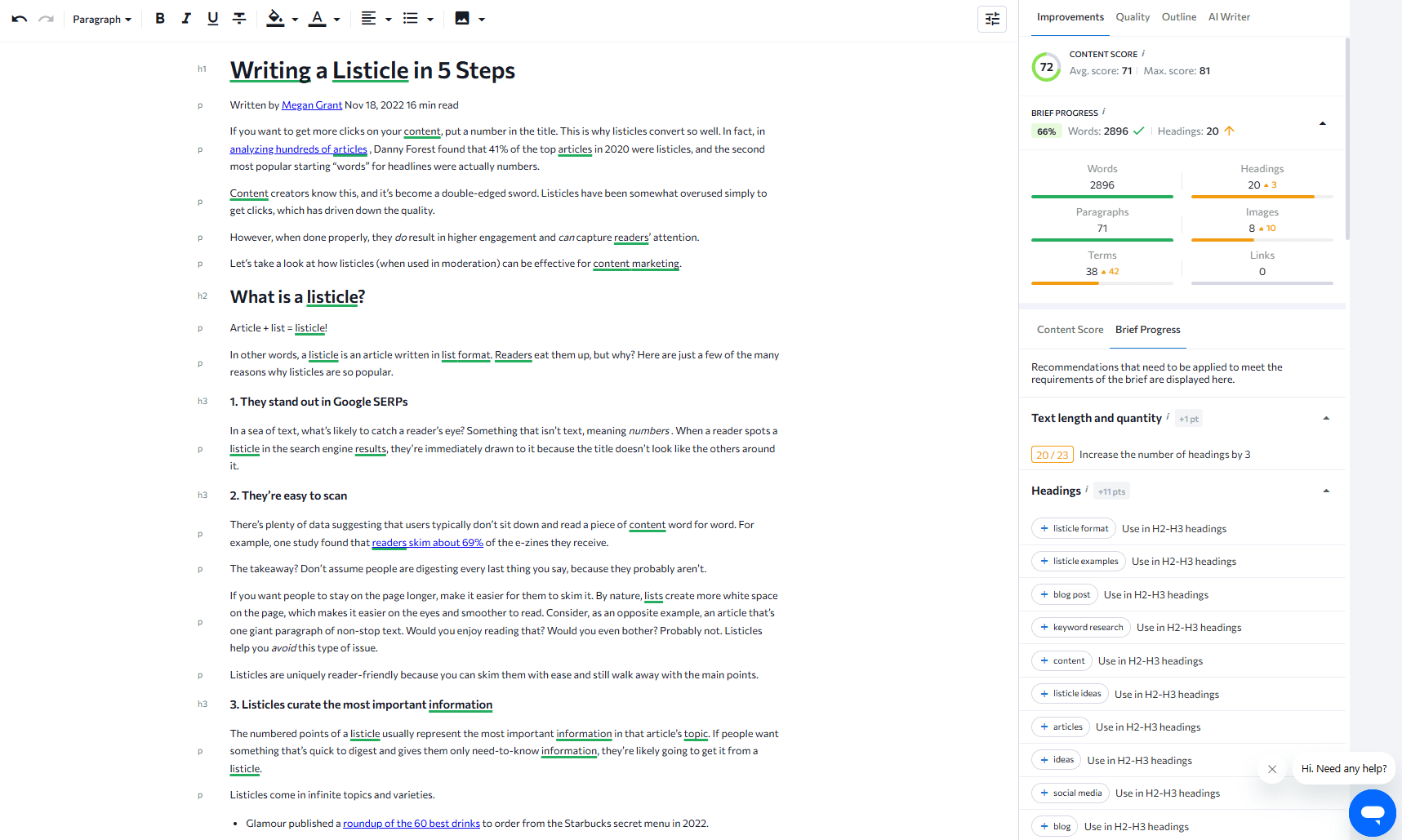
The tool also helps you build a perfect text structure, runs basic grammar, spelling, and plagiarism checks, detects stop words, and measures your texts’ readability score.
Evergreen content best practices
To get the most out of your evergreen content, work on its long-term maintenance, promotion, and monitoring. Here’s how.
1. Actively promote it on social media
Brands tend to think, “We’ve already shared that on Facebook. We can’t share it again.” False! You can share evergreen content over and over again. Try this:
- Switch up the posting times. Maybe sharing it in the morning triggers more engagement than sharing it in the evening. You won’t know until you test it out, and you might even reach different crowds of people.
- Update the caption when you post it.
- Switch out the featured image.
You can also repurpose your content on different social media marketing channels. For example, it’s common to pull a quote from your blog and share it as a graphic on Instagram.
2. Build backlinks to the page
Another site linking to your content indicates to Google that your information is authoritative and trustworthy. These are called backlinks. The more backlinks you can get, the better, but only when they come from relevant, high-quality websites!
Check out our comprehensive backlink guide to learn why backlinks are crucial for your SEO success and where to get them.
Creating content that people want to link to is the best way to get backlinks. Either offer unique data or your unique perspective. Your article should also include unique visualization elements like infographics. If you provide similar information to your competitors while also presenting it in the same way, you probably won’t get a backlink.
Another method is to get your article in the first position on the SERP. Users often don’t want to scroll down. If they need to link to a relevant source, they will likely click on your site if it appears first on the SERP. This is because the first position signals that you are a trustworthy source.
Beyond this, networking and collaborating are your best friends. Reach out to websites that could benefit from your content and see if they’d be willing to give you a shout-out. Pitch your content to them and explain how using your data and linking back to it can improve their content.
3. Monitor rankings and revise accordingly
How your evergreen content ranks can change over time. It might climb to position three on page one after a few months, only to drop to position 10 after another few months. Keep an eye on these changes and respond accordingly to keep your content ranking well.
SE Ranking’s Rank Checker shows you these changes in one intuitive dashboard. Monitor the keywords your content ranks for and how those positions change over time.

If you notice that one piece of content is dropping in rankings, consider ways to improve it:
- Could it benefit from more images, videos, or GIFs?
- Could you expand on certain points to provide more information and value?
- Are you incorporating a strong CTA and relevant internal links?
- Are you consistently promoting it on social media and to your email list?
- Can your content piece get quality backlinks? What about the backlink profile of the pages that are pushing you down the ranking ladder?
Here’s how to find all the backlinks pointing to a page (yours or your competitors’).
4. Update your top-performing articles
What about content that consistently performs well? You may still need to maintain it over time! Revisit it every few months to ensure that everything is still accurate and applicable, and, as previously stated, see if there’s any room for improvement.
Here’s what to check every few months:
- Internal linking structure
- Facts and statistics
- Example relevance
- Screenshots or images
- Outdated information
- Industry changes
- Availability of broken links
- Keyword rankings
- The number of relevant keywords
Putting it all together
Evergreen content is an indispensable part of any good content strategy. It applies to all industries and is especially beneficial if you have a small team and lack the resources to publish several articles per week. Sprinkle in some click-worthy trending content to build more momentum and satisfy your visitors’ demand, and your content marketing efforts will surely pay off.

